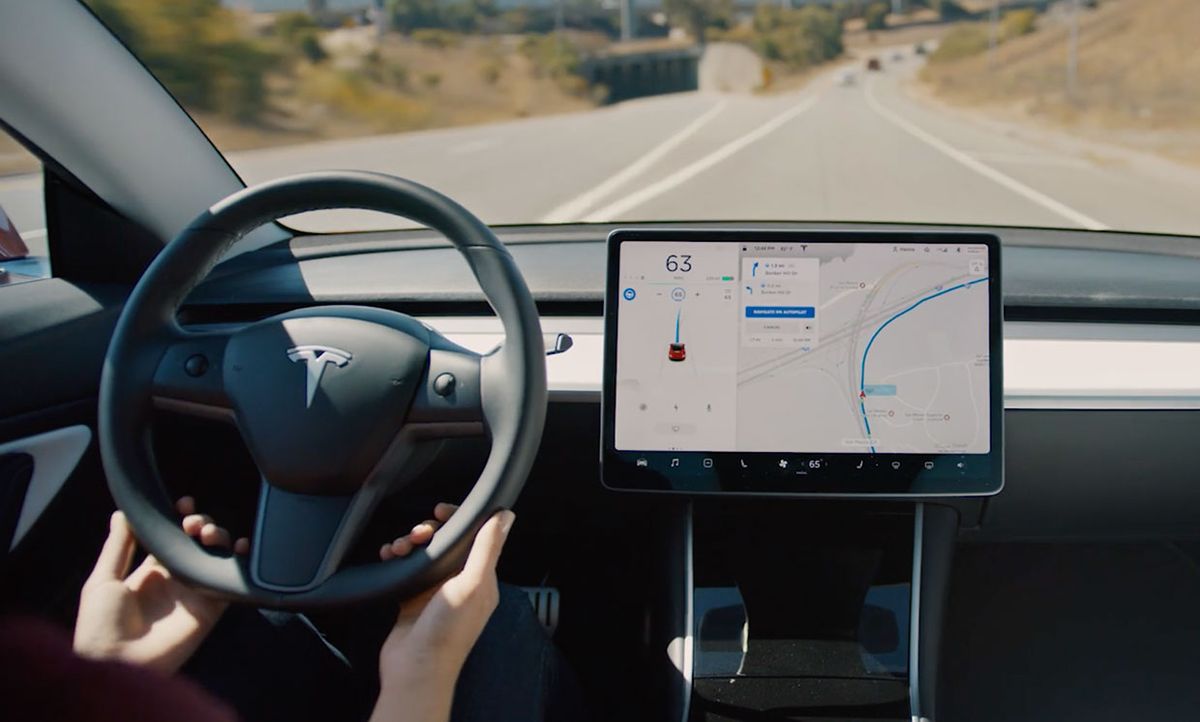Tesla said on Friday that the company’s latest robocar system can guide “a car from a highway’s on-ramp to off-ramp, including suggesting and making lane changes, navigating highway interchanges, and taking exits.”
Note the word “suggesting.” Though the feature, called Navigate, is part of the just-released version 9 of Autopilot, and though it does more detailed analysis than before, it doesn’t do more actual driving. The human being behind the wheel must still stand ready to supervise, to intervene, and to initiate any lane changes, by flicking the turn stalk.
That flick-the-stalk requirement was instituted back in May 2015, as this blog reported in a post entitled “Tesla's Robocar to Driver: Accept the Liability, Buster.” Yet despite Tesla’s effort to make drivers pay attention to the road, almost one year later—on 7 May 2016—a distracted driver died after slamming his Tesla Model S into a truck. That death hit the industry hard.
So after all these years, a Tesla is allowed only to suggest making a turn. And that’s precisely what rival cars do, notably the Cadillac CT6 with Super Cruise—which our own Lawrence Ulrich calls the current standard for self-driving prowess in a production car. Then again, Super Cruise was never billed as being anything more than a driver’s helper; its very name is unprepossessing.
Other companies have also been scaling back their robocar promises. Waymo, arguably the industry leader, was to have started a true commercial ride-hailing program by about now, but the project, based near Phoenix, Ariz., is making baby steps past the pilot stage. Last week the Financial Times quoted Ruth Porat, the chief financial officer of Alphabet, Waymo’s parent company, as telling industry analysts that though people were now indeed paying for rides, commercialization was still “in very early days.”
So Tesla is not alone in facing headwinds. But Elon Musk, its mercurial chief executive, has made far more “I got this” robocar promises than anyone else. The very name of Autopilot has been criticized for overpromising.
Two years ago this month, Musk said a Tesla car would drive itself from Los Angeles to New York by the end of 2017. It didn’t happen. Now he’s saying only that the cross-country demo will follow the release of version 10 of Autopilot, but this time around, he’s not providing a firm date. (Musk now speaks just as Tesla’s chief executive, having been shorn of his chairman’s title after getting into trouble over financial statements he made in a tweet.)
Philip E. Ross is a senior editor at IEEE Spectrum. His interests include transportation, energy storage, AI, and the economic aspects of technology. He has a master's degree in international affairs from Columbia University and another, in journalism, from the University of Michigan.



